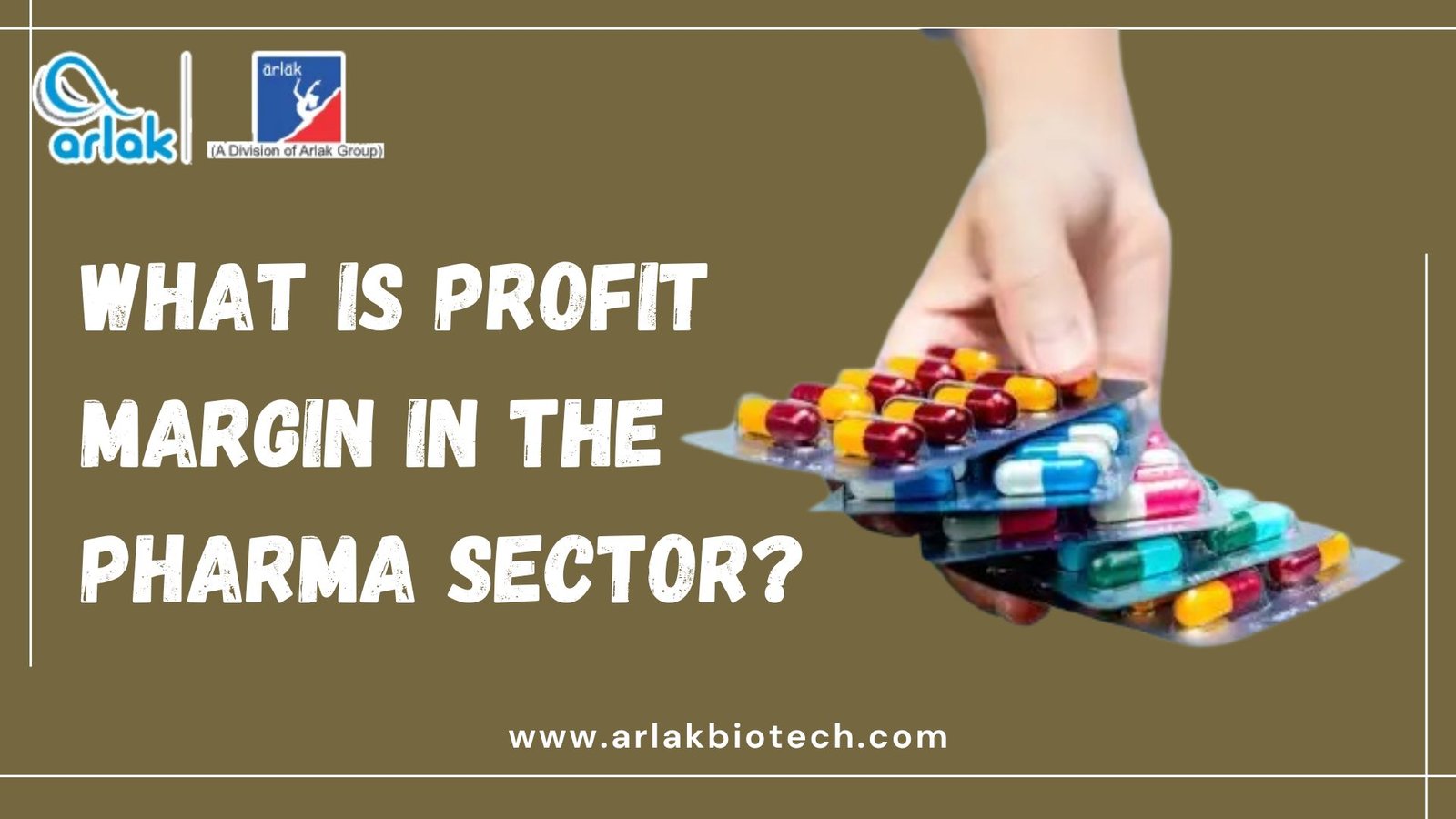What is Profit Margin In The Pharma Sector?
What is Profit Margin In The Pharma Sector? The Indian Pharmaceutical Industry offers lucrative business opportunities to aspiring entrepreneurs. This dynamic sector provides an exceptional opportunity for high returns on a modest investment. Higher profit margins not only drive profitability but also stand as a clear measure of a company’s sustainability and growth. As compared to other sectors Pharmaceutical segment leverages higher profit margins, due to patented drugs, specialized formulations, and the Constant demand for healthcare products.
Profit Margins represent the difference between the revenue generated from drug sales and the total costs involved in manufacturing, research, distribution, and marketing, expressed as a percentage of revenue. However, these Profit Margins depend on various factors, hence understanding What is Profit Margin In The Pharma Sector? Becomes significant for entrepreneurs, analyzing profit margins provides insights into growth potential, operational efficiency, and long-term stability in this ever-growing Industry.

Understanding Profit Margin In The Pharma Sector?
Profit Margin refers is a financial measure that depicts how much profit a company earns from its revenue after covering all costs. It refers to the percentage of a company’s revenue that has translated into actual profit. Additionally, it serves as a benchmark for comparing performance with competitors and assessing long-term sustainability. Profit Margin is calculated by taking net income and dividing it by total revenue, then expressing the result as a percentage.
Profit Margins helps you determine how efficiently a company manages costs such as manufacturing, marketing, research, and distribution while generating revenue from drug sales.
Discover Key Factors Affecting the Profit Margin In The Pharma Sector
Profit margin serves as a vital measure of financial performance in the pharmaceutical industry, reflecting how efficiently a company converts its revenue into profit. However, these margins are influenced by several factors.
Understanding these key factors is essential for pharma companies, investors, and entrepreneurs to make informed business decisions. Some of which have been discussed as follows:
Manufacturing and Production
These are the core components of the pharmaceutical business, directly influencing cost structures and profit margins. Hence, outsourcing production to third-party manufacturers can reduce costs and improve profit margins.
Research and Development Costs
Developing new drugs requires significant investment in research and regulatory approvals. High R&D costs can lower margins initially, but successful drugs can generate high returns.
Regulatory Compliance
Compliance with regulations from CDSCO, FDA, or WHO involves costs for certifications, audits, and quality control. Efficient compliance strategies reduce penalties and recalls, protecting profit margins.
Pricing Strategy and Patents
Pricing strategies, such as premium pricing for innovative or patented drugs, can boost profit margins.
Marketing and Distribution Costs
Pharma companies have high marketing and distribution costs, which boost sales but can reduce profit margins if not managed efficiently.
Operational Efficiency
Operational efficiency directly influences the cost of production and overall expenses. Maintaining high operational efficiency is one of several factors to achieving sustainable profitability, pricing flexibility, and long-term growth.
Market Demand and Competition
High demand for essential medicines with low competition allows for higher margins. The competitive pharma market with many generic options may force price reductions, compressing margins.
How Profit Margins Drive Growth in the Pharmaceutical Industry?
Profit Margins are a significant or the core driving force for establishing a higher growth in the Pharmaceutical Market. Higher profit margins enable pharma companies to reinvest in research and development, leading to the formulation of innovative drugs and advanced therapies. Also, it allows companies to withstand market fluctuations, regulatory challenges, and competition, ensuring long-term stability.
With the rising competition in the Pharmaceutical sector, manufacturing the best and safest quality helps companies to stand out among all, hence establishing a deep penetration in the market and strong brand presence.
The significant profits generated from successful, patented drugs directly fuel this cycle. Additionally, profitability attracts investors and stakeholders, facilitating funding for strategic initiatives and partnerships.
Here’s a List of how Profit Margins Drive Growth in the Pharmaceutical Industry, highlighted as follows:
Strengthening Research and Development– Higher profit margins allow investment in developing innovative drugs and healthcare solutions.
Expansion Opportunities- It helps companies expand their manufacturing units and enter new domestic and international markets.
Attracting Investors– Strong profitability attracts investors and facilitates access to capital for growth initiatives.
Enhancing Operational Efficiency– Profitability enables the establishment of advanced technologies and optimization of processes.
Long-term stability– Consistent profit margins ensure business sustainability and the ability to reinvest for future growth.
Conclusion
Understanding profit margins is crucial for assessing the financial health, growth potential, and sustainability of businesses in the pharmaceutical sector. For stakeholders and investors, analyzing these margins provides insights into how companies like Arlak Biotech maintain competitiveness, drive innovation, and ensure long-term stability in a rapidly evolving industry. If you’re seeking to enter this dynamic industry, here’s a comprehensive guide to profit margins in the Pharma Sector.













